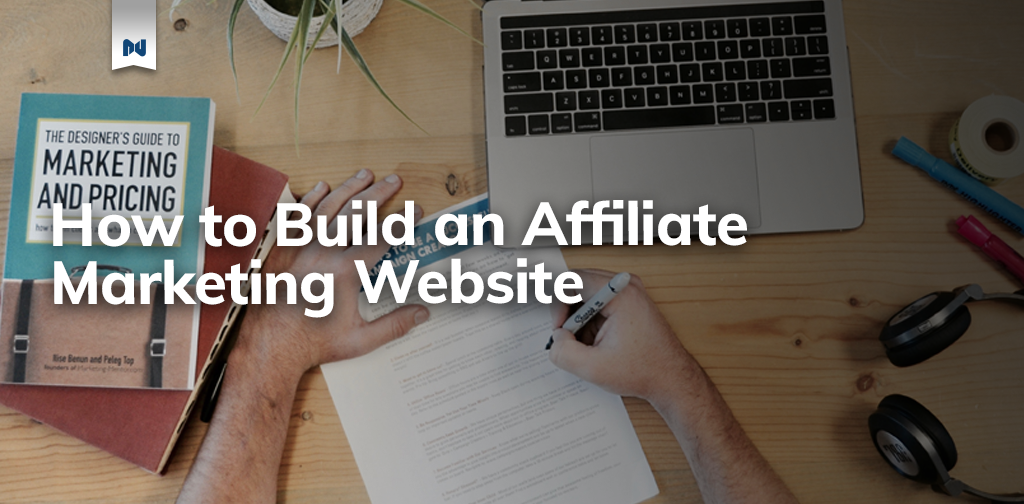Recent events make it even more important to learn how to build an affiliate marketing website.
If you’re a marketer, then you know that building an affiliate marketing website is a great way to get the products and services you promote in front of more people.
But what are the benefits of having an affiliate marketing website, and how can you make sure that your site is successful?
In this blog post, we’ll take a look at the benefits of affiliate marketing websites and discuss some tips for making yours successful.
Why you need an affiliate marketing website
You could use Facebook Ads in its heyday from 2015-2018 to set up new ads and direct cold traffic directly to an offer. No website was required!
Facebook changed its rules in 2021, so after the iOS 14 update, affiliates are now limited to 8 conversion points for Facebook Ads. With so many iOS users opting out of tracking, it’s difficult to target your audience as precisely as you used to.
Ad cost increases on all platforms doesn’t help matters.
Social media influencers also come to the realization that when they stop producing regular content, their business starts heading on the decline. Whereas an affiliate marketing website with plenty of SEO content keeps on bringing in the visitors from something posted years earlier.
Affiliate marketing is becoming less transactional and more relationship-oriented. Your success as an affiliate will depend on your reputation and brand recognition.
You can now build an affiliate marketing website, regardless of whether you want more content marketing control over your e-business or simply need a website that is decent enough to satisfy Facebook ads.
An affiliate marketing website as a base for your e-business also helps with approval when applying for a company’s affiliate program.
How to create an affiliate website that makes money
This guide will show you how to make an affiliate marketing website using WordPress, the most popular content management system on the market.
There are other options for building websites, such as Squarespace, Wix or Systeme ![]() Or you can code your own website from scratch.
Or you can code your own website from scratch.
But WordPress is a solid choice because it offers both usability and flexibility to suit any affiliate’s business. It’s also completely free… but you should choose what works for you!
There are many strategies that you can use to promote your affiliate link. You should think about ALL of them in your affiliate marketing journey. But this post will focus on setting up a product review site with SEO content.
Ready? These are the steps for building an affiliate site.
Step 1. Choosing a niche for your affiliate website
You should choose a niche for your affiliate marketing business before you start building your website.
A niche is a specific topic or audience that you have chosen to target for your website. These are just a few examples from ClickBank’s marketplace.
- Copywriting
- Cryptocurrency investing
- Parenting
- Health for men
- Weight loss & diets
- Travel
- Music
- Astrology
You can further break down these categories by “niching down,” which allows you to be extremely specific about your topic. Many affiliate marketers swear by “authority websites,” which cover a wider range of topics within the same niche.
For example: If you are interested in diet & fitness, you could create a very niche site about “keto-friendly food recipes” or a website that focuses on “diet & fitness in general,” which might include topics about ketosis food recipes but also related areas such as nutrition, strength training, and supplies.
Both can be successful – you just need to decide which approach is best for your company.
Be careful not to be too specific (ie, a website about “organic keto foods for glutton intolerant women”), or too general (ie: a “diet hub for all things diet”).
These are some other things to keep in mind when selecting a niche.
- Is it sustainable? It’s not as simple to create and monetize seasonal niches. Temporary niches are more difficult to build than permanent niches. Niches that are influenced by fads and trends are less likely to be profitable. You should choose a niche that is still in demand for at least three to five years.
- Can you monetize it? It is possible to monetize it. While almost everyone has an internet connection, they are all interested in health, wealth, and relationships. However, niche topics like underwater basket weaving won’t have enough demand to support a profitable affiliate business.
- Are you passionate about your business? It doesn’t mean you have to like everything about your business. However, if your topic isn’t something that interests you, it will be difficult to stay committed enough to your chosen topic.
The first step in narrowing down your niche options is to determine which affiliate offers you will be marketing.
It’s your job as an affiliate to connect buyers with digital and physical products that interest them. This is essential for your business to succeed!
Step 2: Get your Affiliate Website’s Domain and Hosting
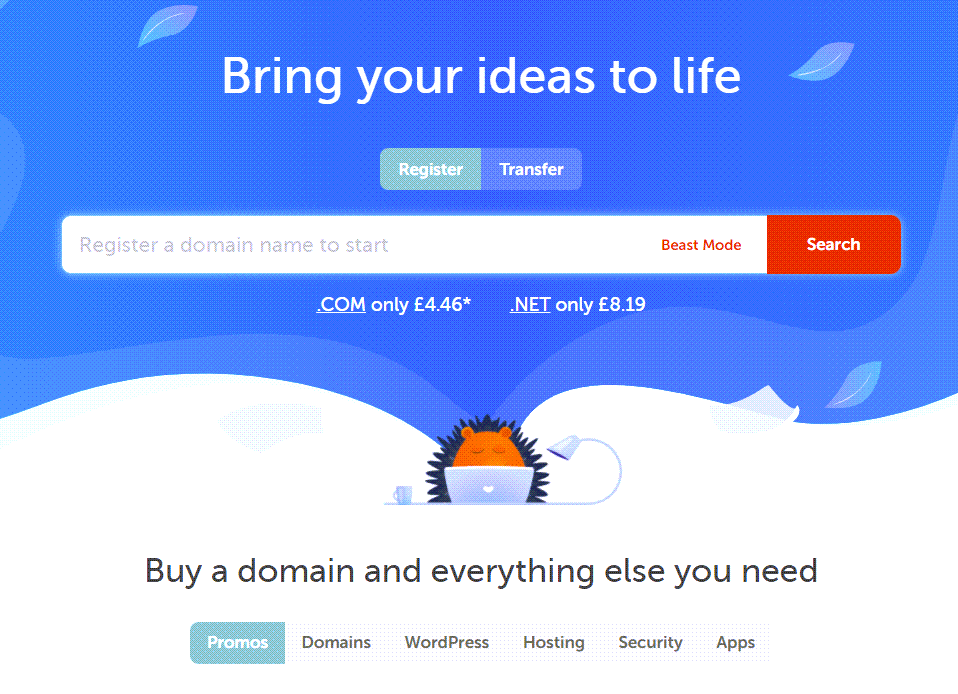
1. Buy a domain name and hosting
Any website needs a name. Therefore, the first step is to register a domain name for your future website. The name of the website will become its permanent address where users can find it on the Internet.
A unique domain name can be registered through an accredited company such as Namecheap or purchased from the current owner.
Namecheap ![]() is one of the most popular and longest established domain registrars.
is one of the most popular and longest established domain registrars.
Next, we will need to select a web hosting provider. Although everyone may have a different opinion about which web host is the best, it’s mostly because everyone has different needs.
Hosting a large e-commerce site requires hosting that is more robust than for someone with a small content site. However, speed, support, ease of use, and price are all still important factors to consider.
Namecheap provides surprisingly fast, cheap hosting for WordPress. Their EasyWP Turbo plan ![]() is more than sufficient for even quite high-traffic blog sites. Plus their support is top-notch.
is more than sufficient for even quite high-traffic blog sites. Plus their support is top-notch.
Once you’ve completed the steps above you will now have your new website with a standard WordPress theme. From there, you’ll want to pick a WordPress theme that can support a professional-looking affiliate website.
There are 1,000’s of themes to choose from. You can spend days messing about with free themes trying to get them to look as you want. If funds are limited, go with any free theme and just get stuck into creating content on it, rather than how pretty it looks.
I use ThriveSuite for all my sites, if funds aren’t such an issue, do yourself a favor, save days of aggravation and just go ahead and get ThriveSuite. You’re more than likely going to be getting it eventually anyway once you see the additional conversion-focused plugins they also offer that all play nicely with each other.
Affiliate Marketing Website Set-up
To set up your website, you will need to modify a few things.
- Logo
- Favicon
- Font
- Brand colors
- Footer and header
- Blog archive page
You can control most of these elements in the theme’s Appearance > customize. You can also look in the documentation to find other areas where you can tweak the theme to give it personality.
You don’t have to be too specific about customization at this stage. Spending a day messing about perfecting the perfect logo and if it looks better 10 pixels from the top or 15px is borderline procrastinating busy work. These are all things that you can change later.
Next, you’ll want a handful of free or inexpensive WordPress plugins to get you started:
- An SEO tool like SquirrlySEO
 or Yoast SEO
or Yoast SEO - A caching tool like WP Cache or WP Rocket
- A lead capture tool like ThriveLeads

You will also need to create your own pages. You should have the following in order to create a niche website:
- Home page
- About page
- Contact page
- Disclaimer/Privacy Policy Page
- Blog
Many affiliate websites have a page called “tools & resources” or “partners”. This page lists some of their recommended resources and links.
Step 3: Choose an offer to promote
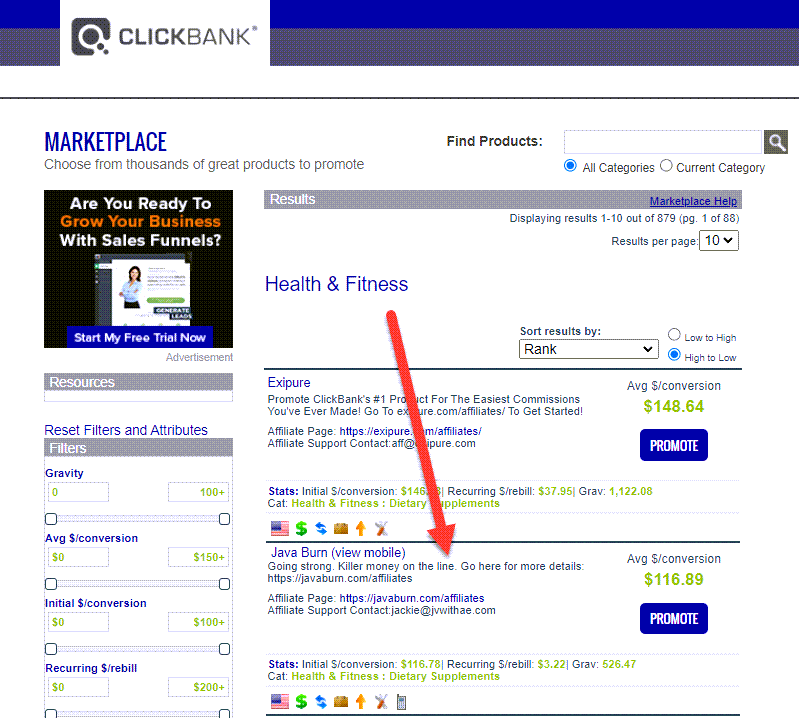
Once we have the website set up, it’s time to find offers that we’d like to promote.
For example: Let’s say we’ve picked the “Health & Fitness” niche category at ClickBank. Choose a good selling product on the first page in Clickbank’s marketplace.
In this example I’ve chosen Java Burn, it’s ranked 2nd and has an affiliate page for promotional resources we can use. The average commission of $116.89 per sale is also a good payout.
Step 4: Create regular website content
Once we have found offers that we like, we can now create content for the site. The content will be published on the site’s blog. To create a new post in WordPress, navigate to Posts > Add New.
If you want to make money with your new blog site, and you don’t want to struggle to make it as successful as you want it then, there is no other option than choosing to provide consistent, quality, valuable content to your audience…
That is the secret…
You create a blog and make money per month if you make sure you maintain a high level of consistent, valuable content that solves your audience’s problems.
It’s that simple.
The 3 Types of Affiliate Content
These are the types of affiliate material you will produce for your content website:
- Review of products (x review)
- Product comparison posts (x and y).
- Buying guide/roundup/listicle posts (x best ____)
It is also important to create informative content that offers insane value and delights readers. These are also known as “pillar posts,” and they do several important things.
- They show Google and your visitors that this is a real website and not just a place where you can spam tons of affiliate links.
- Because they tend to be much more popular than affiliate material, pillar posts are great for getting backlinks on other sites.
- They can act as bridge pages for traffic to a paid ad campaign or email campaign (ie, a midpoint destination within your funnel that then points you to your offer page).
Back to our example:
First of all, we’ll need to create a pre-sale review article. This is our “bridge post” with our affiliate links to the products sales page on ClickBank.
Its pure purpose is to warm up our prospects to click through to the sales page.
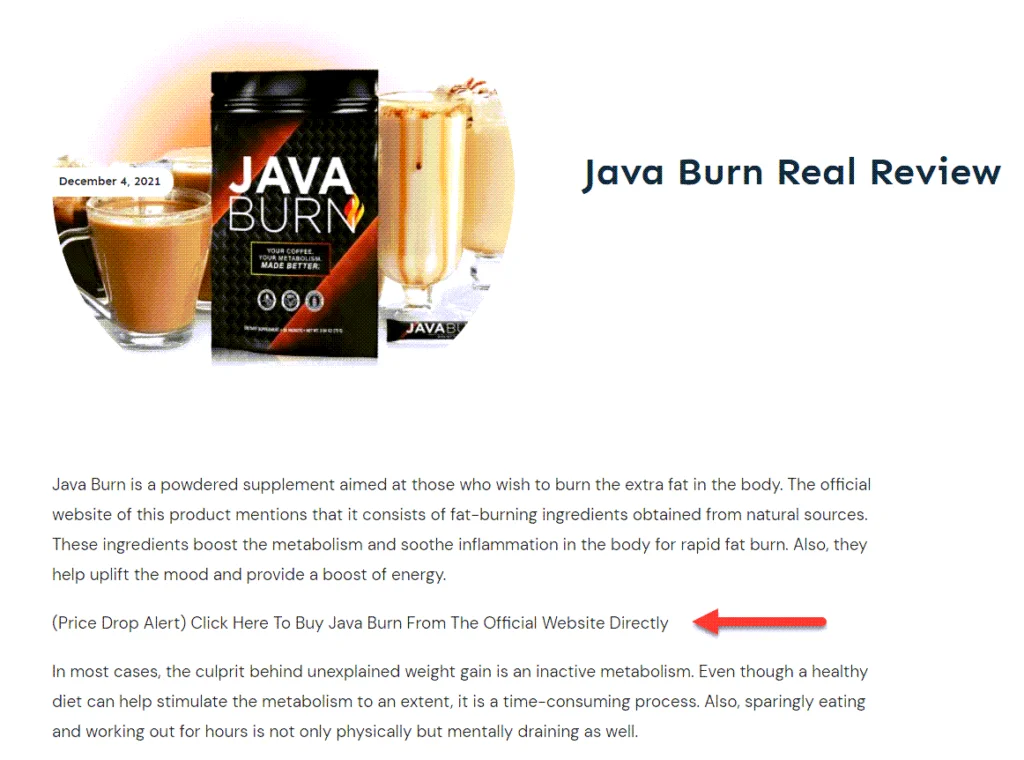
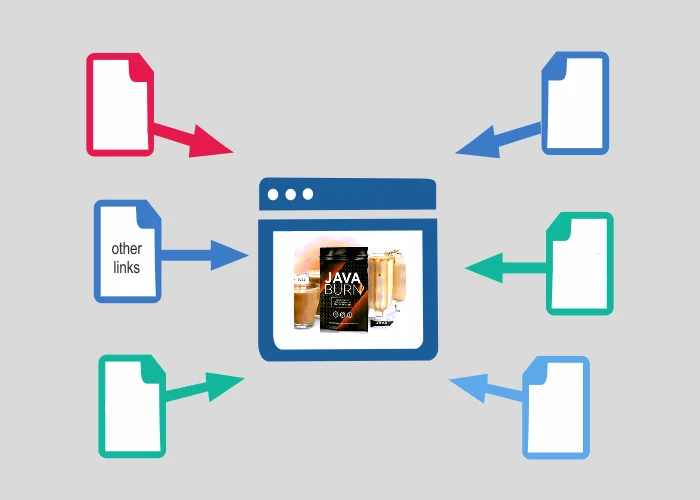
We can search for “Java Burn review” to get ideas to “borrow” for creating our own pre-sales article.
From here we want to post as many articles as we can on our site pointing to this pre-sales article. How many? The more the better. But I would say around 12 good quality SEO’d posts would be a good figure before moving onto another complimentary product.
The posts ideally will be closely related to the product. E.G.”Does Coffee Raise Your Metabolism Enough To Lose Weight” “Coffee and Ketosis..” and similar long-tail easier to rank keywords for the articles, all containing calls to action to click through to the main pre-sales article (not the sales page at ClickBank).
Using this strategy has two-fold results. You’re building good SEO content in the keto, weight loss niche for your site and all the content is warming up your visitors and directing them to make a purchase of JavaBurn.
If the JavaBurn product should disappear from ClickBank, only our pre-sales article is left redundant, our additional 12 posts hardly mention the product name as their content is around “Keto”, coffee, metabolism, etc and can easily be re-purposed to point elsewhere to another focus post on your site.
Step 5: Build Your Email Subscribers List
We wouldn’t be doing our jobs right as affiliates if we don’t take our visitor’s details to follow up via email, initially with JavaBurn related emails before sending your regular email newsletter with additional help, advice, and offers.
This is easily done using a lead capture tool like ThriveLeads ![]() . For an autoresponder, you can get going for free with Aweber
. For an autoresponder, you can get going for free with Aweber ![]() or Systeme
or Systeme ![]() both of which can be easily connected to your ThriveLeads
both of which can be easily connected to your ThriveLeads ![]() or similar opt-in plugin.
or similar opt-in plugin.
You can now use your affiliate website to operate in the niche you choose.
- Get more affiliate SEO content. This will help you build an authority site that earns thousands per month in affiliate revenue and display advertising revenue.
- Use your website to create an email list, and promote affiliate deals there.
- Now that you have a website with a niche and a verified domain, you can focus on ads or YouTube. You can host bridge pages and landing pages on your site.
- You can use everything you have learned about your niche to create and market your product (just add WooCommerce to your e-commerce store and you’re good to go).
- Make a tidy profit by selling the website to a third party.
There is no one path to affiliate marketing success.
However, building your own affiliate marketing niche website can be a great starting point for your business.
PS: If you would like to skip a lot of the learning curve with how to build an affiliate marketing website, then make sure to check out Solo Build It by SiteSell ![]() . (With 20+ years of students’ success stories on how to build a web business that outperforms, this business model works).
. (With 20+ years of students’ success stories on how to build a web business that outperforms, this business model works).
